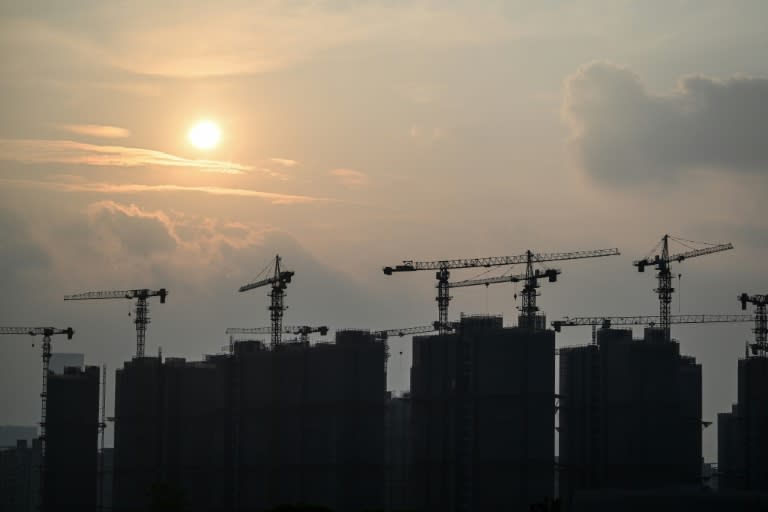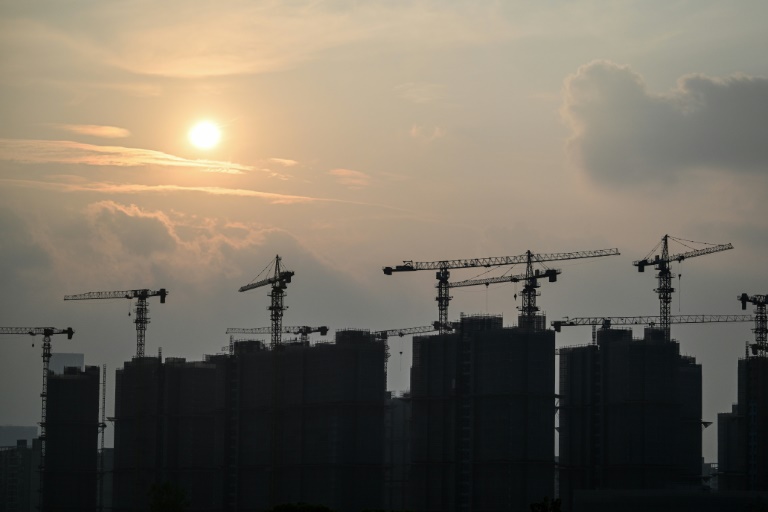
Three Chinese megacities on Monday eased restrictions on home buying and Beijing’s central bank said it would ask financial institutions to cut mortgage rates as the country tries to pull itself out of the housing crisis.
The measures are the latest in a series of pledges from Beijing since last week aimed at restarting the world’s second-largest economy.
The faltering real estate sector has long accounted for about a quarter of the gross domestic product and has experienced dizzying growth for twenty years.
But a years-long slump in the housing market has become a major drag on growth as the country’s leaders set a target of around five percent this year. According to objective analysts, this is optimistic given the many headwinds the economy is facing.
Late on Sunday, three of the country’s biggest cities said they would make it easier for people to buy homes, with measures set to come into effect on September 30.
The southern megacity of Guangzhou – home to more than 14 million people – said potential homebuyers would no longer have their “house purchasing qualifications” assessed, according to state news agency Xinhua.
There will also be “no restrictions” on the number of homes someone can buy, it added.
The nearby city of Shenzhen has also relaxed some purchasing restrictions, with buyers no longer subject to “assessment of their qualifications for purchasing a home,” according to local media citing authorities.
And in eastern economic powerhouse Shanghai – the country’s richest city – authorities said they would reduce the tax burden on some homebuyers and reduce down payments on homes.
The series of announcements came as China’s central bank said on Sunday it would ask financial institutions to cut interest rates on existing home loans in a bid to “reduce the financial burden on property owners”, Xinhua said.
Yan Yuejin, deputy director of the E-house China R&D Institute in Shanghai, told AFP the moves were driven by “pressure” in the property market.
“Fewer people are buying real estate these days,” he says.
Getting the real estate market moving again was key to boosting lagging domestic consumption, another major drag on growth, according to Yan.
China’s leadership last week unveiled a series of measures to boost the economy, in one of the biggest efforts in years to boost growth.
– Looming ‘macro challenge’ –
But they also warned that the economy was plagued by “new problems”.
Markets in Hong Kong and mainland China have recovered following the announcements, hoping for more support.
On Monday, property developers were among the big winners, with Kaisa rising almost 60 percent, Sunac over 16 percent and Fantasia over 30 percent.
However, analysts warned that the ‘bazooka’ stimulus was still likely not enough to boost the property market, and were skeptical that Monday’s new measures would help much.
“From a macro perspective, these policies are not that important as these cities account for a small share of the national real estate market,” Zhiwei Zhang, president and chief economist at Pinpoint Asset Management, said in a note.
“The most important policy to address the macro challenge remains…fiscal,” he said.
Official data showed on Monday that output shrank for the fifth month in a row in September, underscoring the tough task ahead for the government.
The Purchasing Managers’ Index – an important barometer of industrial production – stood at 49.8 points, the National Bureau of Statistics announced.
Still, it represents a slight improvement from August’s 49.1 points and above the 49.5 forecast in a Bloomberg survey.
A figure above 50 indicates an expansion of industrial activity, while below that there is a contraction.
ll-oho/dan







